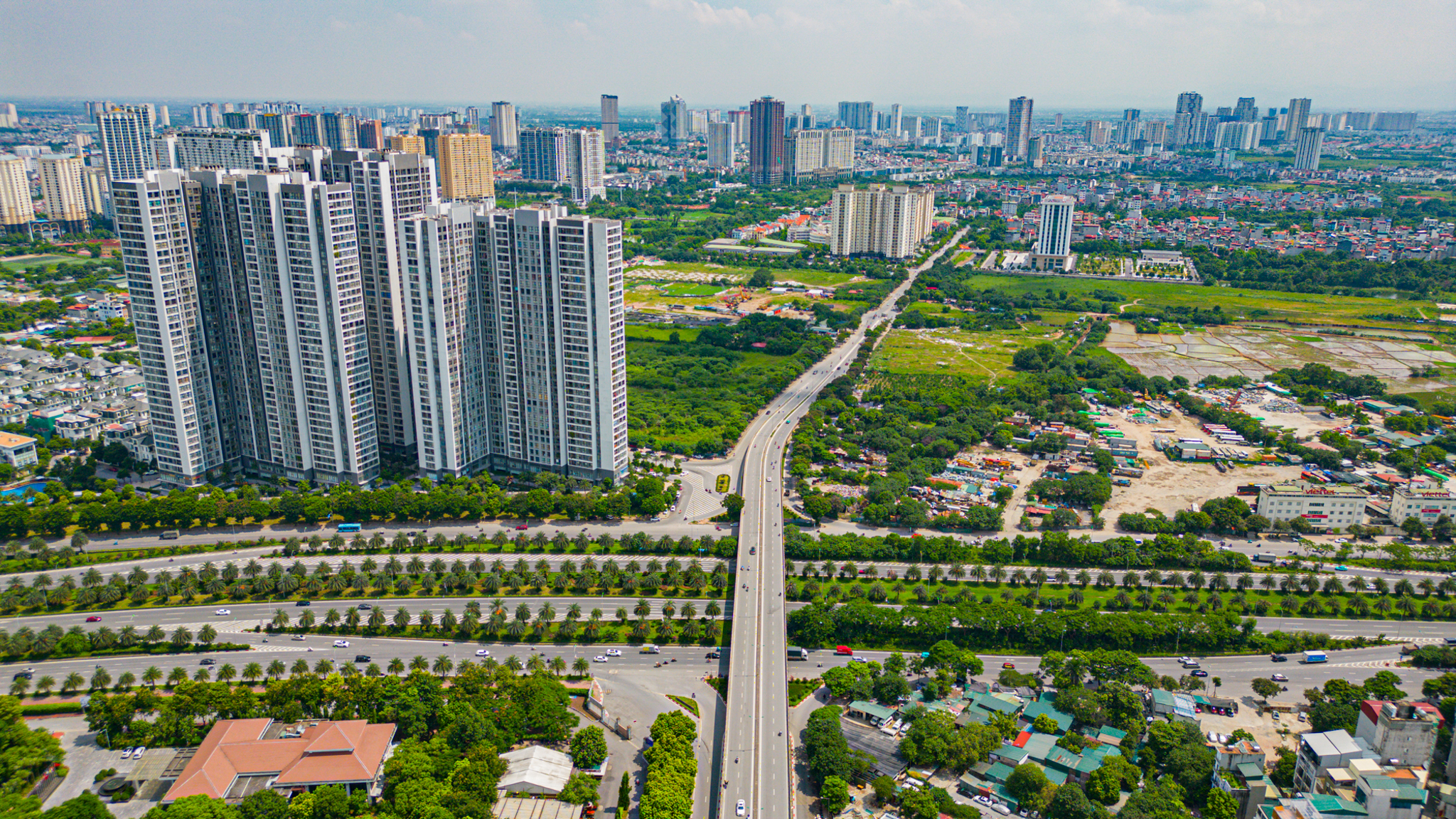
In late 2013, the government issued a resolution to adjust the administrative boundaries of Tu Liem district, dividing it into two new districts: Nam Tu Liem and Bac Tu Liem. Nam Tu Liem district officially came into operation in April 2014, covering an area of over 3,200 hectares (over 32 sq. km)

Over the past decade, Nam Tu Liem district has undergone significant transformations. Once a rural area on the outskirts of the city, it has now evolved into an urban district with upgraded administrative status, and its position as the gateway to the capital city has transformed it into a “livable urban area”

This progress is partly attributed to the numerous projects that have been and are being implemented in the district, including large-scale urban and residential developments such as Vinhomes Gardenia, Vinhomes Smart City, and Lumi Ha Noi, which boast regional-level scale and standards.

A notable example is Vinhomes Smart City, a project by Vingroup with an area of 280 hectares (2.8 sq. km) featuring 98 villas and 58 apartment buildings. A decade ago, this area was just a field as seen on Google Earth. The photo shows the construction of the large-scale urban area in 2019.

Today, the presence of Vinhomes Smart City has transformed the Tay Mo and Dai Mo areas, and Nam Tu Liem district as a whole, into a bustling and vibrant hub.


Not far from Vinhomes Smart City is the Lumi Ha Noi project by CapitaLand, with a projected development value of over one billion Singapore dollars (18 trillion VND). Just eight months ago, this area was an empty plot of land, but now it is being rapidly developed. In just a few years, this site is expected to accommodate nine buildings ranging from 29 to 35 stories tall, along with nearly 4,000 apartments.

According to Ms. Do Thi Lan, a resident of Nam Tu Liem district, the establishment of the district has led to improved infrastructure and a significant increase in property values. For instance, the value of her house on Do Duc Duc Street, Me Tri Ward, which was over 2 billion VND before 2014, rose to 4.5 billion VND in 2016, and she is now offering it for sale at 13 billion VND.

Ms. Nguyen Thi Dung, a 65-year-old resident of Nam Tu Liem district, also shared that since the district’s formation, numerous high-rise buildings and urban areas have been developed, attracting students and workers to the area. This has positively impacted local businesses and caused a surge in property values. For example, the value of her commercial property in Me Tri Ha market area increased from over 80 million VND per square meter before 2014 to 110 million VND per square meter around 2020. However, she feels that she has missed out on further gains as prices have continued to rise significantly. Photo taken in 2014, source: Znews.

Notably, Nam Tu Liem district has also invested in urban transport infrastructure, with four key transport routes and 18 road projects, gradually completing the district’s transport network to meet its development needs.

With a large number of key investment projects, the district’s economy has been boosted, and the economic structure has rapidly shifted in the right direction. The average growth rate of the total production value of all economic sectors in Nam Tu Liem district during the 2014-2023 period reached 13.7%. By 2023, the total production value of all economic sectors reached over 78.6 trillion VND, an increase of 3.2 times compared to the first year of the district’s establishment.

The rapid shift in the economic structure has contributed to improving the lives of the district’s residents. The average income per capita in the district reached 99.8 million VND/person/year by the end of 2022 (double that of 2014). State budget revenue in the 2014-2023 period exceeded 71.2 trillion VND, with an average annual increase of 20% (3.5 times higher than in 2014). Nam Tu Liem district has become one of the top contributors to the state budget in Hanoi.
Comprehensive regional connectivity
In addition to building strong physical infrastructure, Ho Chi Minh City needs to strengthen its soft connections with other provinces in the region in order to promote economic development. This includes prioritizing the training of skilled workforce and ensuring access to quality healthcare.
Territory-based credit policy in Ho Chi Minh City shows nearly 39% growth
Credit programs, not only support and assist the poor and vulnerable, who are the main subjects of policies in Ho Chi Minh City, with capital for production and business to create livelihoods and employment opportunities, but also play a significant role in the direction of sustainable economic development, economic growth, and social security ensured by the Government.
Looking back at meaningful credit policies
Results in overcoming obstacles, recovery, and business growth, as well as macroeconomic stability, are greatly influenced by credit and policy credit.
















